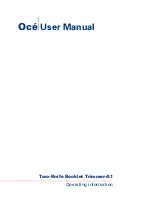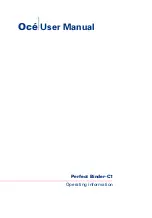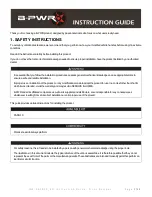
ó ïë ó
Preparations before driving
If the bicycle rack is not fully loaded, it must be ensured that:
Brackets that are not in use are screwed closed and locked
All keys are removed and stowed away
The bracket for the third/
fourth bicycle is stowed away
The lashing straps of all wheel rails are closed.
General safety instructions
The vehicle owner is responsible for assuring that his or her field of
vision and hearing are not impaired by the load or the condition of
the vehicle. It must be ensured that the vehicle and load are in
accordance with the regulations and that vehicle road safety is not
impaired by the load.
The required lighting and lighting systems must also be present
and functional during daylight.
These Mounting and Operating instructions contain the general
approval of the bicycle rack for trailer hitches and must always be
kept in the vehicle when the rack is mounted.
Follow the legal regulations regarding use of the bicycle rack in the
country of use.
߬¬»²¬·±²
All screw connections and attachments of the bicycle rack and
the bicycles must be checked before assembly, before every
trip and during lengthy trips to ensure they are sitting firmly,
and they must be retightened if necessary.
The lighting system must be checked to ensure it is working
properly before every trip.
If these instructions are not followed, the bicycle rack together
with the mounted bicycles may free themselves from the
vehicle and cause injury to you and other persons, and/or may
result in an accident.
This check must be repeated at regular intervals regardless
of road conditions.
߬¬»²¬·±²
The bicycle rack license plate and the lighting system must
not be covered.
߬¬»²¬·±²
The operating steps and safety instructions described in these
mounting and operating Instructions must be adhered to.
The bicycle rack for the trailer hitch is intended only for
transporting bicycles. The bicycle rack is not suitable for
use on rough terrain.
All screw connections and attachments of the bicycle rack and
the bicycles must be tested before assembly, before every trip
and during lengthy trips to ensure they are sitting firmly, and
they must be retightened if necessary. This check must be
repeated at regular intervals regardless of road conditions.
During the trip, the driver should check the bicycle rack and
bicycles for any shifting/changes in position by glancing in the
rear view mirror.
If changes are noticed, proceed to the next possible stopping
area at reduced speed and retighten the screw connections
and attachments of the bicycle rack or bicycles.
If these instructions are not followed, the bicycle rack and/or the
load may free themselves from the vehicle and cause injury to
you and other persons, or may result in an accident.
߬¬»²¬·±²
Do not use lubricants on the pre-mounted screw connections.
This could cause the screw connections to loosen and the
bicycle rack together with the mounted bicycles may free
themselves from the vehicle; this may cause injury to you
and other persons, or may result in an accident.
߬¬»²¬·±²
If the load (the bicycles) extends more than 40 cm beyond the
outer edge of the lit area of the side-marker lights or tail lights
of the rear rack system, the load must be marked at most 40 cm
from the edge and at most 150 cm above the road surface,
at the front by a white light and at the back by a red light.
Separately mark the bicycle wheels extending out laterally
during transport.
When driving at night, cover the rear lights and reflectors of the
bicycles to prevent confusion with the rearward-facing-vehicle
lighting and to avoid hindering or confusing other road users.
Failure to do so could result in an accident


































